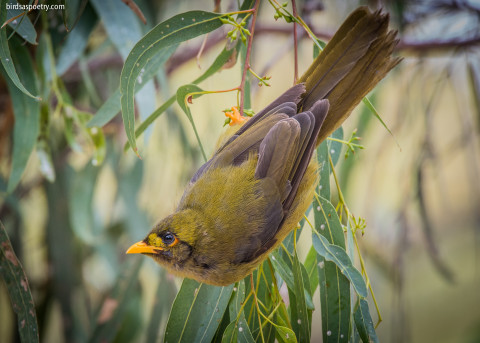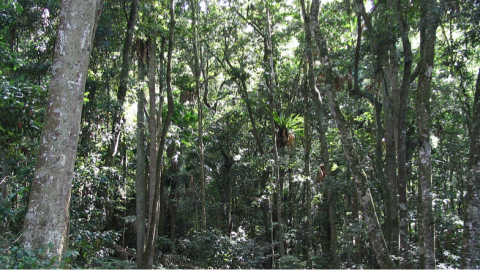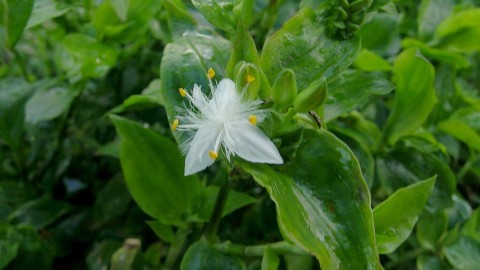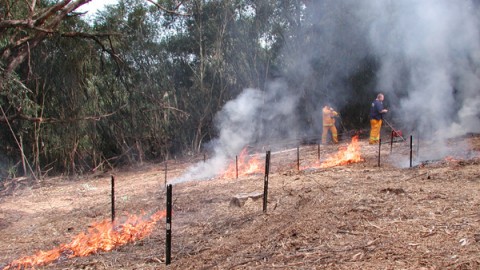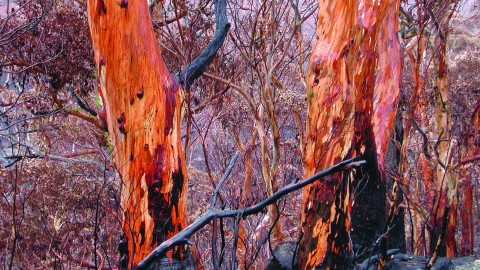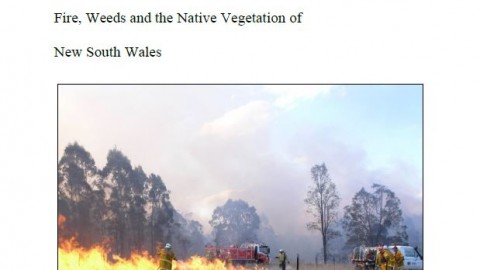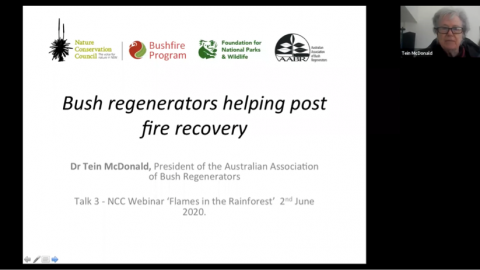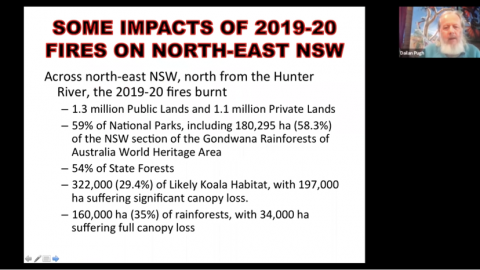This article was written by Jim Morrison. Jim is the Northern Regional representative on Nature Conservation Council of NSW Executive committee, a member of the NCC’s Bushfire Advisory Committee, President of the North Coast Environment Council and a member of the BMAD Working Group.
BMAD is a serious forest health issue that was determined a Key Threatening Process in NSW in 2008. BMAD involves a complex interaction of forest structure and floristics, birds, insects and hydrology.
BMAD Ecology
BMAD results from the interaction between Bell Miners (bellbirds), sap sucking scale insects called psyllids and various species of eucalypts. In a balanced forest bell miners exist in small discreet colonies along the edges of moist sclerophyll forests. However, BMAD develops when natural control mechanisms break down and both Bell Miners and psyllids explode in plague proportions.
Following more than 15 years of conjecture, the BMAD Causal review (Silver and Carnigie 2017) clearly identified canopy disturbance as the primary causal factor in the development of BMAD.
The proliferation of dense understory shrubs, predominately lantana in Northern coastal forests, often following canopy disturbance (logging), provides enhanced nesting success and survival opportunities for the Bell Miners, while the abundant growth of new soft eucalypt leaf tissue provides enhanced resources for sap sucking psyllids. The sugar-based secretions of the psyllids form a scale called a lerp which bell miners utilise as a food source. The Bell Miners particular feeding habits allow them to remove the lerp without killing the psyllid which continues to produce new lerps.
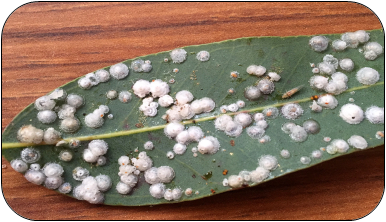
Psyllid infested leaf with lerps. (Julia Smith Northern Rivers Fire and Biodiversity Consortium (NRFABCON)
As Bell Miner numbers explode, other birds which would kill the psyllids are driven away by the aggressive, territorial behaviour of the Bell Miners, which also eliminate invertebrate psyllid predators such as spiders and wasps. The psyllids defoliate the trees which are successively attacked as new soft regrowth emerges which is richer in nitrogen and more accessible than the older leaves, establishing a positive feedback loop which eventually leads to tree death. The stressed trees also become more susceptible to other insect pests such as wood borers as well as fungal pathogens. Another positive feedback is the ever thickening of understory as the overstory thins, further enhancing nesting success for the Bell Miners.
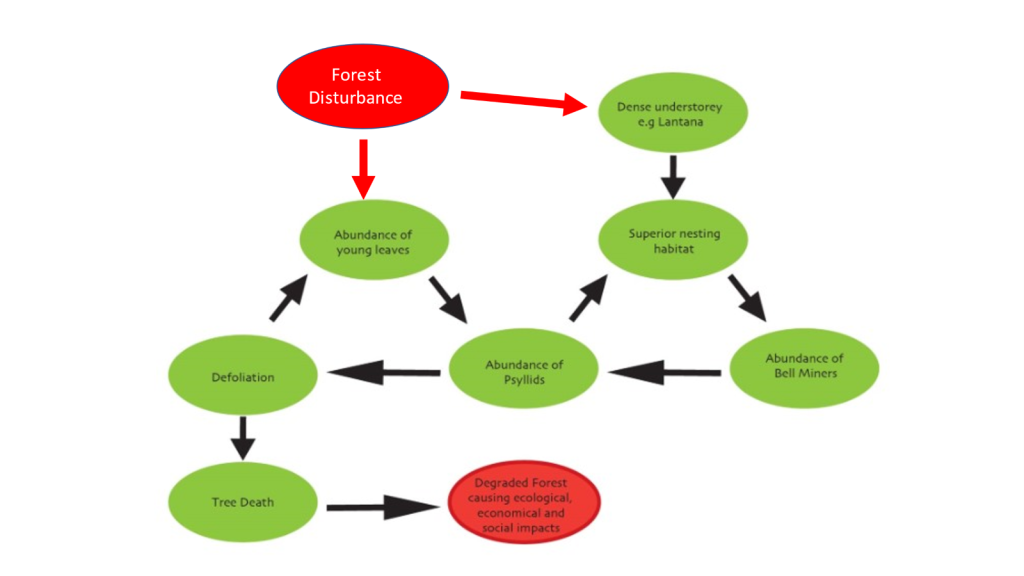
(NRFABCON)
The end result of unmitigated BMAD is total ecosystem collapse which is apparent across the northern parts of the Richmond Range and the Border Ranges. In badly impacted sites there are areas of 10-20 hectares where all susceptible eucalypts are now dead stags over a sea of lantana. There is no chance of natural regeneration as eucalypt seed has relatively short viability and production is reduced over time prior to tree death.
Where fire impacts these areas, rather than mass recruitment of eucalypts as would normally occur, regeneration of fire adapted shrubs and lantana is the expected outcome. The most susceptible eucalypt species on the North Coast are Flooded Gum, Blue Gum, Dunns White Gum, Grey Gum and Ironbark. The moist, productive, escarpment forests are particularly susceptible, although if unchecked the problem extends into drier forest types and additional eucalypt species.
BMAD has increased in distribution and intensity over the past twenty years. It extends in coastal and escarpment forests from SE Qld to Victoria. There are at least 100,000 hectares of forest currently impacted in NE NSW alone.
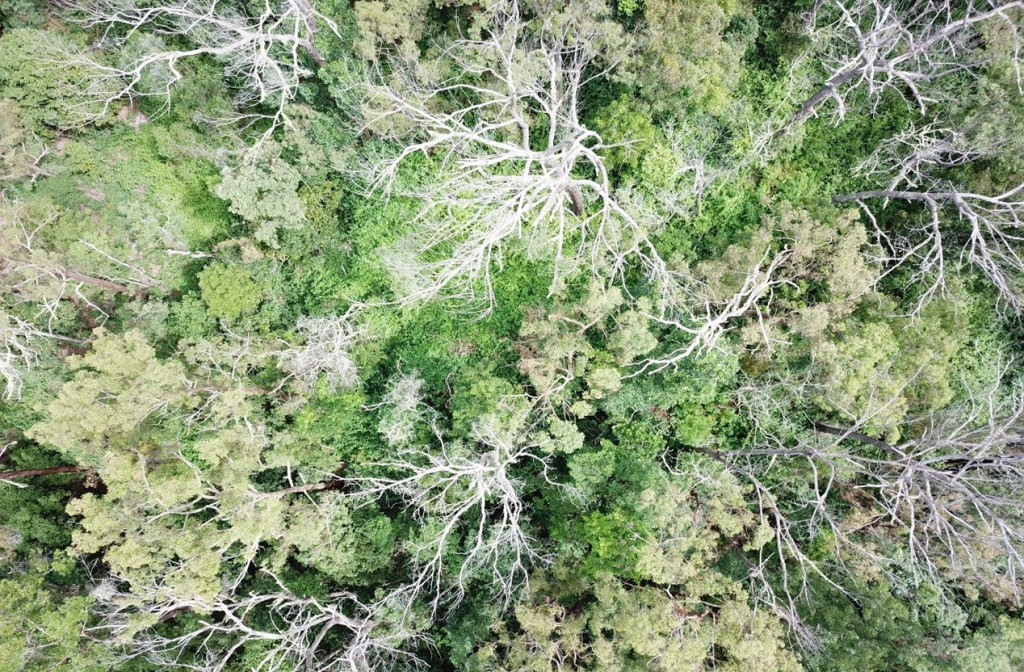
BMAD impacted forest on the Richmond Range (Jane Baldwin NRFABCON)
Implications for fire management
Dense understories provide conditions for very intense fires during drought conditions, helping to facilitate canopy fires and increase mortality of already BMAD stressed trees. The unprecedented penetration of fire into sub-tropical rainforests 2019-20 wildfires was generally facilitated by dense lantana in eucalypt forests on rainforest edges. A wide buffer of healthy, weed free, eucalypt forests abutting rainforests is essential to minimising risk to rainforests from fire.
Mitigation of BMAD involves removal of dense understories over a large enough area to disrupt Bell Miner nesting colonies.
Fire integrated with herbicide treatment may be appropriate in drier forest types. Periodic low intensity fire could then be utilised to maintain grassy understories.
Herbicide treatment alone, with periodic follow up is most successful in moist forest types where fire is difficult to implement and control. The development of native midstory species aids the reduction of understory density and may provide habitat for Bell Miner predators such as grey goshawks. Fire response in severe BMAD sites results in little Eucalypt recruitment. Replanting may be necessary in severely impacted sites to maintain forest integrity.
Top image: Flickr I Am birdsaspoetry.com

